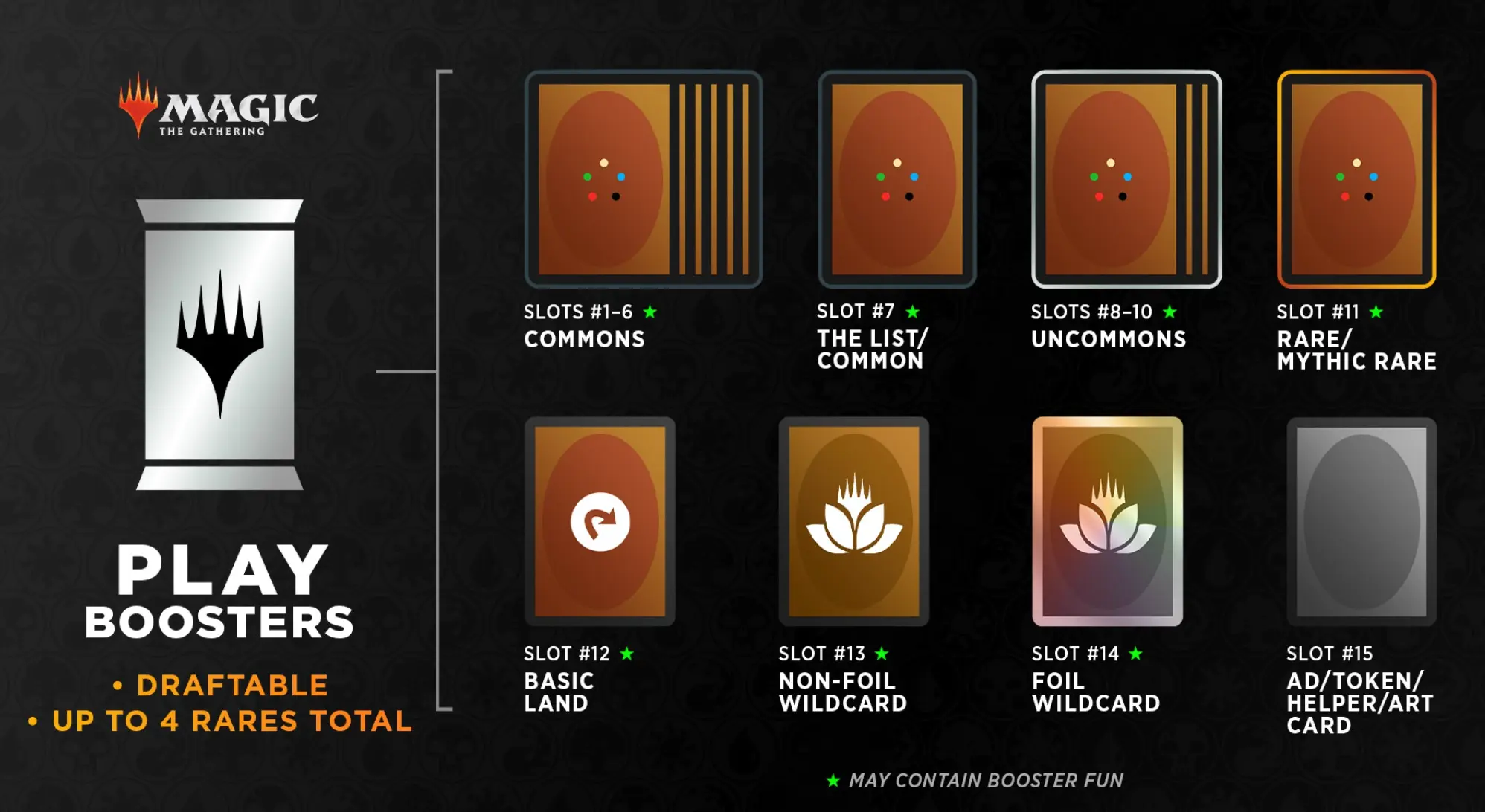What does the controversial new booster type mean for you?
On Monday, the 16th of October, thousands of Magic players tuned into the Wizards of the Coast livestream in anticipation of the latest Banned & Restricted List announcement. Would The One Ring get the axe in Modern? Would Splinter Twin finally be given another chance to shine? Surely they’d at least do something to the Rakdos Evoke that makes up almost a quarter of the Modern metagame, right?

Market Price: $46.81


Market Price: $111.76
Wrong. There were no bans or unbans to any formats this time around however, Magic players were told about a massive change to Magic’s product line starting in 2024 with Murders at Karlov Manor. The Set Boosters that have been around since Zendikar Rising which will see the axe, and the Draft Boosters that have been around since the very start of Magic are no more. In their place, Wizards of the Cost offering us one combined product: Play Boosters. My jaw hit the proverbial floor. Project Booster Fun may have had a massive impact on the Magic market than anything else in Magic’s entire history, where combining two boosters into one is a huge deal, especially since it comes at the expense of a booster that has been around since Bill Clinton’s first term in office.
Join me today, then, as we explore the financial impact of the Play Booster. Is Wizards of the Coast making a massive misstep by shelving their most iconic product, or is this combined booster the course correction we’ve all been asking for? Read on and find out.
Play Boosters Are Great for Brick & Mortar Stores

Market Price: $749.75

Market Price: $73.29
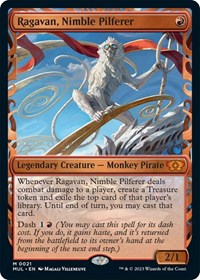
Market Price: $32.33
Magic: The Gathering needs local game stores (LGSs) to thrive. While Magic might survive as a game that’s only played on kitchen tables or at large conventions, most of what we think of as “The Gathering” part of Magic happens at small local game shops, where folks show up for Prereleases, tournaments, and pickup random games of Commander. Without these local shops and their vibrant communities, I never would have stuck with the game for as long as I have, and I don’t think I’m the only one who feels that way.
Running a local game store has never been a super profitable endeavor, and it has become more challenging in recent years. Prices have gone up to the point where profit margins on sealed products can be razor thin, and the rise of cheap products from big box stores and Amazon has created a lot of competition where very little existed before. Product overprinting has also hurt local shops since sealed boxes regularly drop below wholesale cost in the months after release. That grim reality can force local shops to choose between the risk of not having boxes and packs on hand for customers or the risk of ordering too much and having to sell it months later at a loss (something that is commonly called a toxic asset).ARTICLE SPOTLIGHTWizards of the Coast Introduces the Play Booster, Replacing Draft and Set BoostersEverything you need to know about the new booster type.Emma Partlow10/16/2023
The existence of at least three different boosters per set made things even harder. Stores didn’t just have to predict demand for a given set, but given demand for each kind of booster. If a set ends up being a hit for Draft, there’s a very real chance that a store might run out of Draft Boosters and not have enough products available for folks who want to Draft. If a release isn’t well-received for Limited, however, they might be stuck with cases of Draft Boosters while being sold out of Set Boosters. Distributors sometimes got stuck with a glut of one kind of booster and very little of the other, which is part of why so many of these sets have crashed below wholesale in the first place.
As such, this can create a death spiral where stores running on thin margins end up purchasing too much of the wrong booster and are stuck with their money tied up in a product that’s both underwater and difficult to sell at any price. Without enough spare cash on hand, they can’t buy enough products to satisfy demand for the next set, and players choose to shop elsewhere. Rinse and repeat until you’re out of business.
By combining these two boosters into one, stores only have to worry about predicting overall demand for a set, not how popular limited is likely to be. While stores that rely heavily on drafting might take a hit, I would guess that the vast majority of LGS owners will be happy with this change. The change also makes things easier for new players, who are already overwhelmed by the sheer number of products. Want cards to play with? Get a Play Booster. Want cards to collect? Get a Collector Booster. It’s straightforward. Not bad, Wizards of the Coast!
Play Boosters Are More Expensive—With A Twist
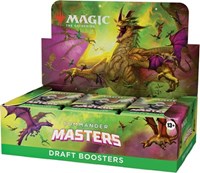
Market Price: $268.29

Market Price: $106.73

Market Price: $167.78
We all already know that Set Boosters are more expensive than Draft Boosters. Right now, a box of 30 Wilds of Eldraine Set Boosters has a market price of $111.77, while a box of 36 Wilds of Eldraine Draft Booster has a market price of $100.31. That’s a per-pack price of $3.72 per Set Booster and $2.78 for Draft Boosters, which is a difference of $0.94 per pack, making Set Boosters about 25% more expensive than Draft Boosters.
We also know that a Play Booster Box will have 36 packs. So, if Wilds of Eldraine had been a set with Play Boosters, you could expect a market price of around $134 for a booster box, right now. That’s about $20 more than the current price of a box of Set Boosters and about $30 more than the current price for a box of Draft Boosters. That’s a significant price hike, especially for folks who don’t care about collectability or card value and want to Draft.
This change is absolutely going to make limited events more expensive. My guess is that the price will go up about $1 per pack, possibly a little more to cover the increased cost of prize packs. You can expect Drafts to be $3-$5 more than they are right now, with Prereleases likely ending up costing $6-$10 more. That’s not insignificant and will likely make these events less accessible for players on a budget. I feel really bad for the folks who will have to Draft less because of this change.
That said, I think this change is necessary. The truth is, Draft Boosters simply didn’t have any cool inserts or unique treatments that give folks a dopamine rush when cracking a pack. Back when Draft Boosters were the only boosters, there was always a minor chance of opening a foil Planeswalker or similar. With this change, it does give you a sense of excitement and achievement regardless of how your Draft or Sealed went. These days, opening a foil Planeswalker in a Draft Booster doesn’t matter since the set foil treatment is so common, and the most valuable cards in a given expansion are usually limited to a specific treatment or subset that isn’t found in Draft Boosters. This devaluation of cards in a Draft Booster made each Draft an almost guaranteed financial loss and made any Draft Boosters earned as prizes pretty useless outside future Drafts. While Play Boosters will cost more, at least you’ll have a shot at opening some really cool cards. I would guess that once the Magic community gets used to this, it will be a net positive for all but the most budget-conscious Draft fiends.
Play Boosters May Seem Like a Downgrade from Current Set Boosters, But Don’t Be So Sure.
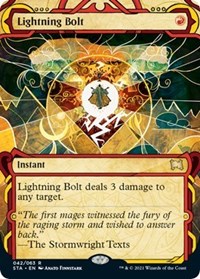

Market Price: $43.93
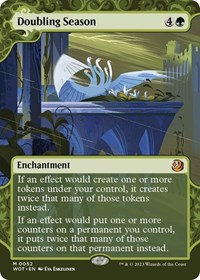
Market Price: $45.61
While we know that Play Boosters will definitely contain more cool cards than Draft Boosters, let’s compare them to the current crop of Set Boosters. Since these Play Boosters will be the same price, they should deliver the same overall card quality, right?
Let’s start with the stuff that’s exactly the same. Play Boosters and Set Boosters have a Basic Land slot, 3 Uncommon slots, a guaranteed foil slot, and a base set Rare/Mythic slot. Those aren’t going to change.
Here’s what will change:
- Play Boosters will have 6 randomized Commons instead of 3 thematically connected Commons. No real financial change here, but this is necessary for these new boosters to be draftable.
- Play Boosters no longer have a dedicated art card slot, as current Set Booters do. Instead, the art card is moved to the token/ad card/list card slot. That slot will no longer contain The List cards. This is another negligible financial change since Art Cards have never had much value to begin with.
- There is a new slot that will have a Common 87.5% of the time and a card from The List 12.5% of the time.
- This drop rate is half of what it is right now for The List cards in Set Boosters. More on this in a bit.
- The non-foil Wildcard slot has been reduced from 2 to 1. This is one of the slots that could contain additional Rares or Mythics in the past, so it’s a potentially significant loss.
- Let’s tackle the loss of the non-foil Wildcard slot first. This is definitely the most notable red flag for potential value lost, but that ignores what’s going on under the surface. Historically, 27% of Set Boosters contained at least two Rares or Mythics, with 3% containing three and less than 1% containing four.
- According to Mark Rosewater’s Blog, however, the odds are actually going up starting with the first round of Play Boosters. He claims 37% odds of getting a two rare pack, 4% shot at three Rares, and less than 1% will get four. This tells me that the drop rate for the existing Wildcard slots will improve with Play Boosters, even though there will be one fewer slot. There’s no other way for this math to make sense, and it means that Play Boosters might actually be better than current set boosters, regardless of the missing slot.
We are also losing the Commander-exclusive cards, which were only available in Set Boosters and Collector Booster without being in either the Commander Precons or the base set. Good. The fact that there were cards that were part of the set without really being part of the set was absolutely maddening, and I won’t miss trying to figure out what to do with these things during my set review.
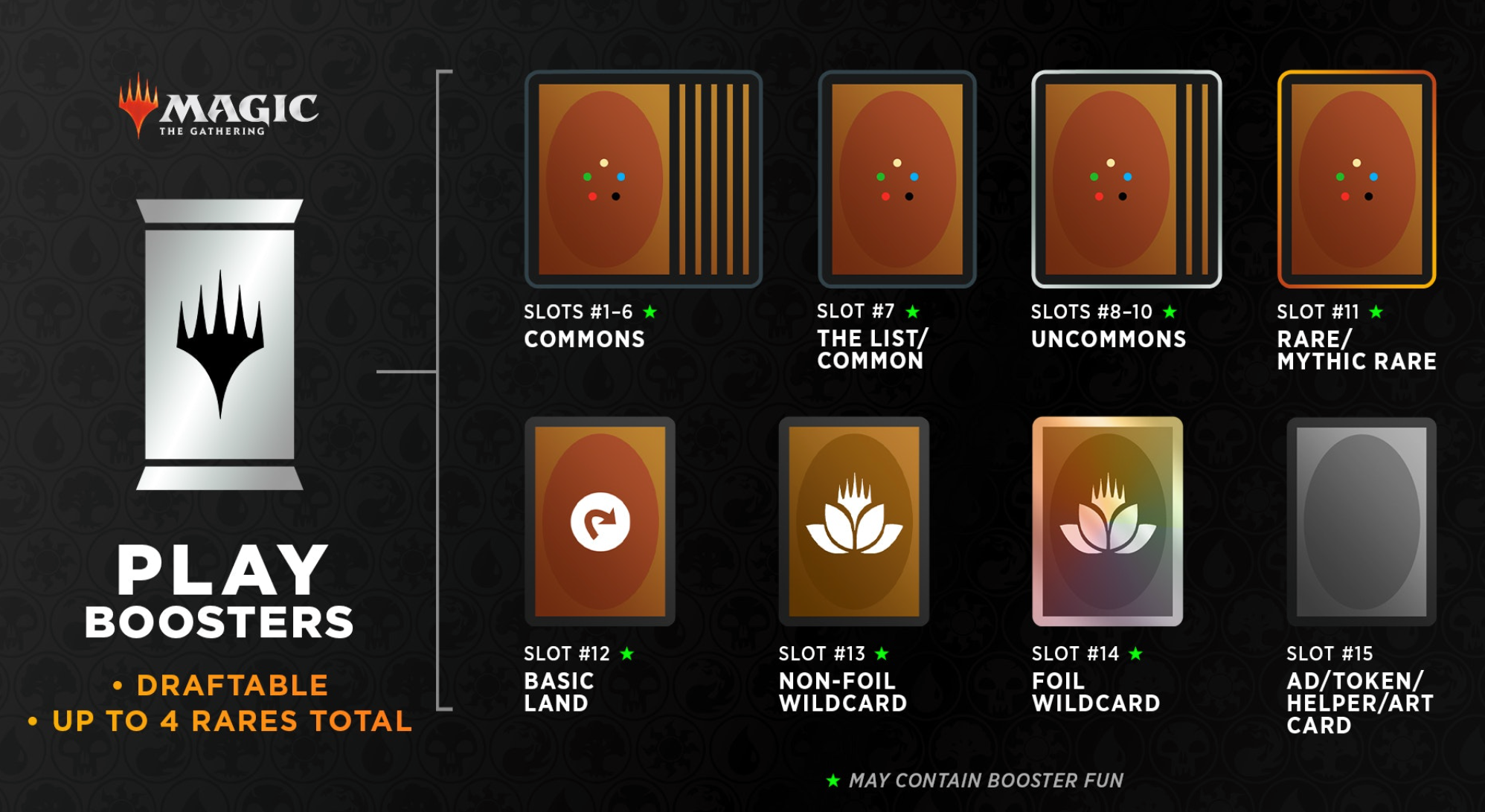
From a layperson’s perspective, this all tracks with Wizards of the Coast’s stated goals regarding the product. Fewer random drops mean they can reduce variance for limited play, but they can improve the existing drops to encourage spending. To that end, I would expect Play Boosters to have as much or more value as existing Set Boosters despite having lower odds of opening a List card and having one fewer Wildcard slot.
Changes To The List Are a Huge Deal
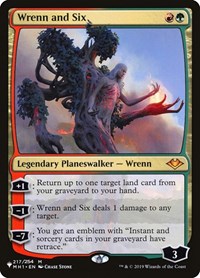
Market Price: $25.30

Market Price: $19.48

Market Price: $44.68
Right now, The List is an unfocused mess of 300 cards. As far as I know, nobody really pays much attention to what is currently on The List or what changes from set to set. It’s literally my job to know this stuff, and I probably can’t tell you more than a dozen List cards right now. That’s not great.
The List will become just 50 cards, 30 of which will be Commons or Uncommons. That leaves us with 20 financially relevant The List cards per set, 10 of which will have Special Guest treatments featuring new art that thematically ties into the set they’re included in. Your odds of opening either a Special Guest card or a Rare/Mythic from the regular The List is 3.12%, which means that you’re likely to average about one financially significant card from this slot per booster box.
Even though Wizards of the Coast has not explicitly said that these changes to The List are replacing bonus sheets like Enchanting Tales (Wilds of Eldraine) or Mystical Archives (Strixhaven: School of Mages), it seems likely that this is at least the short-term plan. I would guess that The List inclusions for each set will now be a big deal, and there should be some seriously expensive chase cards among the Special Guest variants, barring them being super common in Collector Boosters or something.
From a reprint equity perspective, I’m optimistic about this change. Increased scarcity should keep these cards feeling special and rare, as opposed to the current bonus sheets which devalue all but the top chase card or two. I would guess that the best The List cards, especially the Special Guest variants, will be a big deal, and they will hopefully be exciting pulls. Non-Collector Boosters did need scarce chase variants to hunt for that aren’t so common that they stop being exciting right away but also aren’t so overwhelmingly important that they devalue the entire base set. I am super hopeful that these changes to The List will be able to walk that very fine line.

Market Price: $430.73

Market Price: $212.18

Market Price: $3,196.67
I would also guess that Special Guest cards will affect the pre-preview season speculation market. For example, in advance of The Lost Caverns of Ixalan, we’ve seen plenty of Dinosaurs spike in price, especially top Commanders like Gishath, Sun’s Avatar. Before this change, it was unlikely that a card like Gishath would be reprinted either in the base set or the Commander Precons since it is simply too iconic for either treatment. Hell, Mana Crypt will appear as a Special Guest card in The Lost Caverns of Ixalan, which is an incredible hit. Now, however, I would be shocked if Gishath isn’t one of the ten cards that gets a Special Guest treatment for The Lost Caverns of Ixalan. It makes this sort of big-ticket pre-set speculation much riskier, even if the Special Guest variant is scarce enough to keep the price from tanking.
Limited Balance Might Take Its Toll



I don’t want to judge the effect that Play Boosters will have on Draft and Sealed until I see how things play out. While I am somewhat skeptical that this will work out, especially as someone who loves drafting synergistic Common-focused builds and strongly dislikes bomb-heavy formats, Wizards of the Coast is at least saying all the right things about re-balancing limited for the Play Booster changes. They’re reducing the number of cCmmons and increasing the number of Uncommons for these new sets, and have already talked about adding more common removal to help deal with bomb Rares and Mythics. That said, this is a very notable change, and it’s certainly possible that it will take a while for Wizards of the Coast to dial in the right balance if they even can.
If Wizards of the Coast ends up impacting limited seriously, even if it’s by making the format very different instead of objectively bad, you could see sealed Draft Booster display prices from older sets spike as limited junkies realize that they have to play with older sets if they want to enjoy their favorite format in the way they prefer. While I don’t think this is particularly likely, it’s definitely something I’ll be keeping an eye on going forward. If this were to happen, it would make a pretty lucrative speculation opportunity.
Change Isn’t Always Bad
There has been quite a bit of negativity in the Magic community recently, especially surrounding Wizards of the Coast’s constant meddling with their product lines. I honestly don’t blame anyone for feeling this way, and you can read my pessimistic take on plenty of products in this column. It also seems likely that this change was the only way Limited play wasn’t going to end up on the chopping block entirely, at least based on this Mark Rosewater tweet. That’s a pretty sobering reminder of how close we are to losing so much of what makes this game so great.
That said, I actually think the switch to Play Boosters could be a genuinely good thing. While I’m mindful of the impact on Limited, and I understand the frustration over the price increase for the cheapest tier of booster box, the positives may outweigh the negatives here.
The biggest issue that Magic has right now, at least in my opinion, is that there’s far too much product complexity. There are too many sets, with too many boosters, featuring too many subsets and too many variants. By consolidating two kinds of booster, setting the slots in stone, getting rid of set exclusive Commander and Jumpstart cards, streamlining The List, and using that as at least a short-term replacement for subsets, it may actually be far easier to know what you’re getting in a booster in 2024 than it was in 2023. To me, that’s a welcome change, and it bodes well for the future of Magic: The Gathering.
